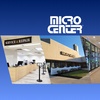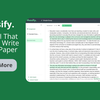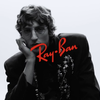{shortcode-96faaab939e65c0d9c967426ea490129b19f0586}
The Harvard Undergraduate Psychedelics Club hosted their Fall 2025 Psychedelic Art Show on Nov. 14 in the Department of Art, Film, and Visual Studies (AFVS) gallery — a new location for the beloved event. Soft sounds of violin set the mood as attendees wandered through the gallery, enjoying the visual, musical, and poetic spectacle.
Chase M. Bourbon ’27, the club’s co-president alongside Katie M. Dorry ’27, noted the transformative nature of the location change.
“We’ve typically hosted this show in a different location,” Bourbon said. “The past three semesters that I’ve hosted it, I’ve hosted it at The Harvard Advocate building, and it’s a lot different now that we’re in a legitimate art gallery.”
“We’re working with the department on the show, which is something that hasn’t happened in the past,” Bourbon said.
The change was present in the event’s atmosphere. The Psychedelic Art show was refined and well thought-out. Photography, collages, paintings, and poetry intermingled on the walls, and the gallery featured a central projection of an ambient short film made by the club members, evoking psychedelic imagery and making the space feel alive.
Ila M. Camara ’27, who holds multiple roles in the club, added her thoughts about the elevation of the event.
“It’s definitely got a maturity to it, for sure,” Camara said. “The word inspiration comes to mind.”
Sparking inspiration for the viewers was certainly integral to the event’s curated experience. In the center of the room rested a blank canvas — attendees were invited to paint whatever they wanted on the canvas. By way of this interactive element, the gallery itself kept a visual record of the people who visited the show as the night went on — scattered on the canvas was an American flag, a ghost, and a flower, among other paintings.
Interconnectedness was a recurring theme in the psychedelic world that the club aimed to create in the gallery. The submission process encouraged a wide range of perspectives, inspirations, and interpretations of psychedelia in order to bridge Harvard’s own artists with the broader world’s.
“We feature 110 unique pieces with something like 20 to 30 unique artists,” Bourbon said. “And I would say close to half are Harvard students this year, and close to half are the rest of the world.”
Bourbon said the show’s submission process followed only one rule: no generative AI.
The aesthetics of the space and the artistic contributions were carefully balanced. The show’s visuals contained multitudes — the pieces ranged from surreal to simplistic, intimate to elusive, colorful to grayscale. Overall, the gallery held a sense of equilibrium.
However, the show harbored meaning beyond visual elegance. Bourbon spoke to its larger artistic goals, connecting the night to the club’s larger mission.
“The first question you get asked when you’re in this club is, are you guys just doing drugs together? And the answer is a resounding ‘No,’” Bourbon said. “Psychedelia as a term is an umbrella term for art and music and consciousness and people and community and all of these other umbrella terms. And so we want to host something every year that kind of gets us in touch with the community.”
Bourbon spoke to the transformative impact that showcases can have on community perspectives around stigmatized practices.
“When Katie and I took over presidency at the beginning of last year,” Bourbon said, “the only members were me, Katie, and the president who passed it down to us — we were three.”
Through art, music, and social events like the exhibit, the Harvard Undergraduate Psychedelics Club has begun to make its own space in Harvard’s art scene. The club’s size has grown to 28 regular meeting attendees.
“That is the most beautiful thing to me, because [the club] wasn’t big,” Bourbon said.
This growing network has drawn in visitors from outside of Harvard’s immediate community, even among those with less exposure to the genre of psychedelic artwork. John Listro, a second-year at Northeastern University, said that he was interested in attending the exhibit for the first time after hearing about it from friends who are involved with the club.
“I like art, and I’ve had friends that came to the meetings before. They said it was really fun, so I thought I’d be able to give it a go,” Listro said.
When asked if he would attend next semester’s exhibit after walking around the show for the first time, his answer was definitive:
“So far, absolutely,” Listro said.
The exhibit’s success may be due to its engagement of all of the viewer’s senses. As visitors walked through the gallery, art, music, food, drinks, and interactive opportunities immersed gallery-goers in the world of psychedelia. The show challenged viewers to rethink their perceptions of what constitutes psychedelia — and what constitutes artwork.
“I just want people to come and not associate psychedelics with anything bad,” Bourbon said. “We’re gonna host an amazing night tonight. We’re gonna have a ton of fun. We’re gonna be super safe.”
Camara expanded on this idea, saying that psychedelic artwork in the show is representative of the genre’s incredible versatility.
“I think that people look at psychedelics and artwork sometimes having, like, a dark tone to it, or like a very fantastical tone. But I don’t know. I hope they get from this that it can be really anything,” Camara said.
The Fall 2025 Psychedelic Art Show invited students at Harvard and beyond to immerse themselves in the world of psychedelic art, making clear that the Harvard Undergraduate Psychedelics Club is carving out a growing place for creative expression, community, and open-mindedness in Harvard’s art scene.
Read more in Arts
Artist Profile: Phillip Golub ’16 on Composing With Audacity












